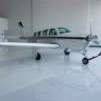TFR Violation Beaufort, SC 4/23/2023 Blue Angles Air Show
-
Members Online
- Vance Harral
- ragedracer1977
- Mac80
- Captainhog
- kaba
- Rick7576
- ohdub
- Bartman
- AdamJD
- PeteMc
- rickseeman
- jlunseth
- WilliamR
- Kerrville
- BrianWilkins
- Andy95W
- Flyler
- kowabunga
- steveP
- Shadrach
- TMass
- 4cornerflyer
- mgtrevor
- lanejacobs84
- hubcap
- Stealth Mooney
- Hank
- hammdo
- squawkvfr
- eman1200
- donkaye
- dkkim73
- Steve2019
- 65MooneyPilot
- richardbrochu27
- benworthy058
- ttflyer
- Stanton R
- Bolter
- JohnnyJ
- whiskytango
- Fly Boomer
- Ethan
- Deb
- NickG


Recommended Posts
Join the conversation
You can post now and register later. If you have an account, sign in now to post with your account.